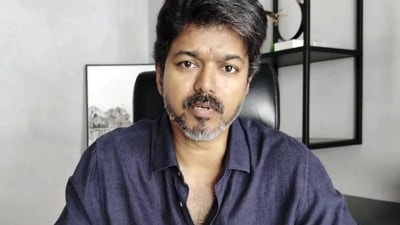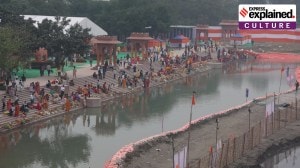Dealing with danger
Stop obsessing with Janmashtami! It's not till the 23rd and it's no big surprise!" said a hardened newshound friend, when he found me...

Stop obsessing with Janmashtami! It’s not till the 23rd and it’s no big surprise!" said a hardened newshound friend, when he found me humming Surdas’s Gokul mein baajat kah barhai in Raag Kedar — for the gazillionth time.
"But it is news each year! The Divine Baby’s birthday symbolises a personal milestone in each of our little lives, it’s a hope point in our own narratives, a chance to renew our spirit," I chirped with (I hoped) deeply annoying enthusiasm. My friend snorted, exactly as I deserved, and stalked off.
But apart from the lowdown — and alas, irresistible — pleasure it offers of riling a cynic, the Blue Lord’s birthday, like Christmas, is truly a happy calendar opportunity to remember a few important things. For one, how nobody has it easy. Not us, not larger-than-life figures. Alexander the Great had to face hostility from his own father, Philip of Macedon. William the Conqueror was nearly done to death a dozen times as a boy, by his own power-hungry uncles. Udai Singh of Chittor would have been stabbed in his cradle but for Panna Dai, and he hid out in the jungles for years before he could lift a finger towards his lost heritage. Rao Jodha had no less of a struggle before he could found his kingdom in the sands of Marusthali. All the Hazrats of the Ahl-e-kitab suffered too, or had to pass terrible tests: Adham, Nooh, Ibrahim, Moosa, Isa, Mohammed. And we know the ordeals of Shri Ramchandraji backwards, perhaps better than our own family histories.
But because of the distracting drama of the Mahabharata, we tend to dismiss Krishna’s childhood as one long happy, bucolic idyll with just a Putana and a Kaliya and a lifting of Goverdhan casting fleeting clouds. In actual fact, how many evil shadows fall on that Baby. Innocents are massacred, his parents are jailed, their first seven babies are dashed to death by Kamsa, and Devaki must deal with the torment of living apart from her only child, knowing that the man who should have been her natural protector is more interested in his own ambitions than in her feelings. No, nothing comes easy in the story of that Life!
However, at the level of personal meaning, the demons that beset Krishna’s life might well symbolise our own inner demons. Putana the poisoner, Kaliya the serpent, Trinavarta the whirlwind, Vatsasura the calf, Bakasura the crane, Aghasura the python, Arishta the bull, Kesin the wild horse, and later, at Mathura, Kamsa’s champion wrestlers who are instructed to take apart the young stripling.
Unlike us, the Divine Child could draw on divine strength. But look at the pattern of his defense-offense: he generally turned the aggressors’ methods on themselves, attacking them on their turf, as it were. You don’t find Krishna the Child whipping out a Sudarshan Chakra.Instead, Putana’s life was drained out of her, Kaliya’s supple body was danced upon in the river itself, the calf was seized by its tail and hurled to death, the crane’s beak was ripped apart, the python’s belly was burst from within, the bull’s horn was torn out and it was gored to death by its own weapon, the fire-spewing horse choked when Krishna thrust his hand into its mouth!
Perhaps the Harikatha is trying to tell us that we, too, like children, are weak and easily destructible. Some of our dangers lie outside (circumstance, like Kaliya), the others are inside us: rancour, greed, spite, whatever. But defenseless as we are, we do seem to have this divinely crazy ability to fight ourselves into betterness and it’s God’s job to be our talisman. That’s why a Divine birthday seems a periodic (and happy) reminder of the value of our own journey from birth to death.



- 01
- 02
- 03
- 04
- 05




























